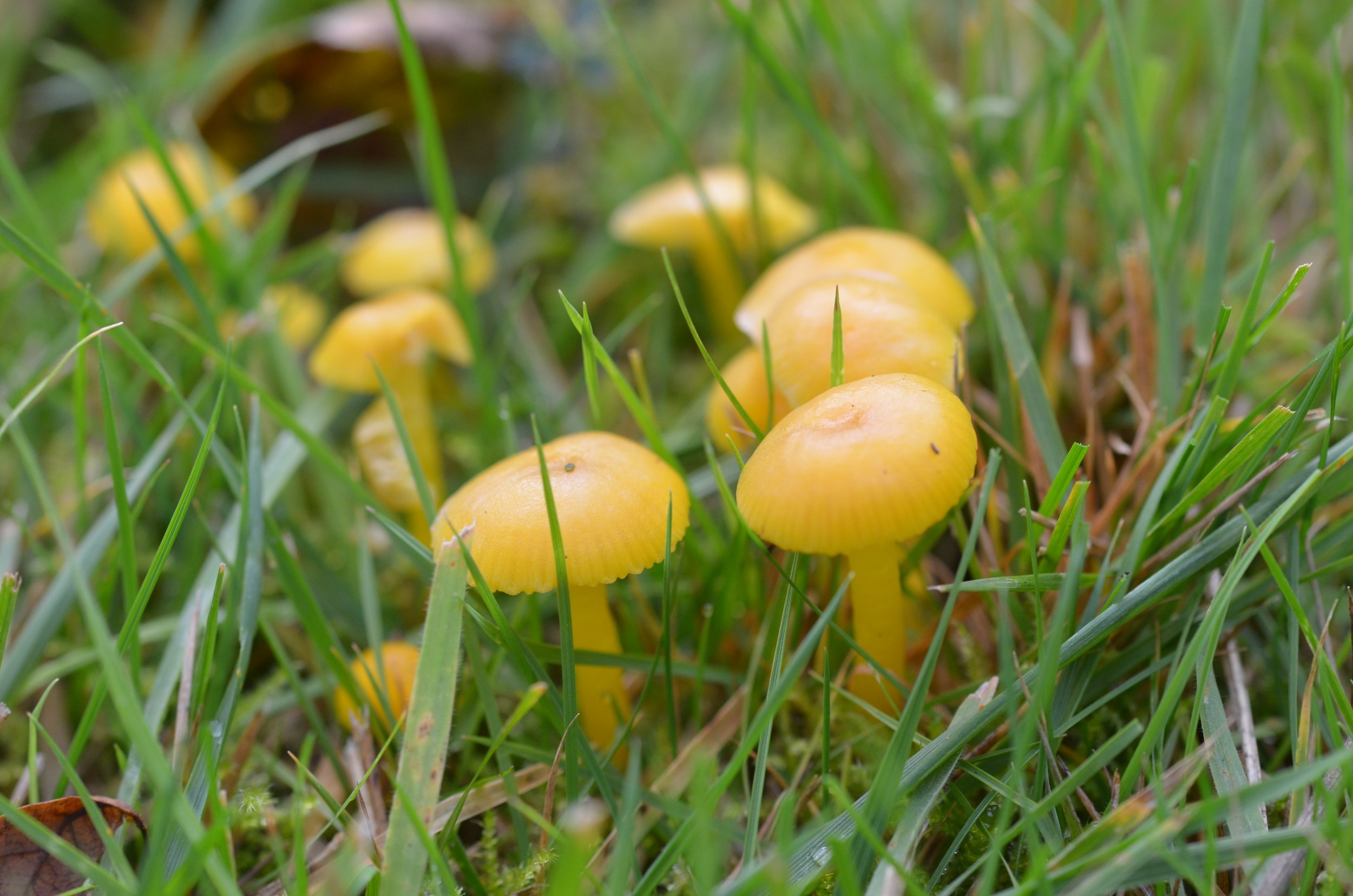Waxcaps
13 October 2024
In the orchard windfalls lie thick and largely neglected. A skittish comma was attracted. And a big hornet came down to munch, unhappy with the company of flies. A poor return for the quantity of fruit on offer.
The orchard grass hides tiny yellow jewels. Butter waxcaps (Hygrocybe ceracea). Not uncommon but as with most of our national fungi family they are depressingly in retreat. Modern management of grasslands typically sees them fertilised, herbicide & pesticide sprayed, overgrazed or overmown.
Butter waxcaps thrive in unimproved grassland and are connected by a network of underground fungal strands. Disturbing the soil breaks the connections. Fertiliser increases competition from grasses. Herbicides & pesticides permeate the soil reducing the vigour of fungi. Over-grazed or over-mown grasslands prevent the fruiting bodies emerging. Harrowing of grassland can also be destructive of delicate soil surface structures.
It is perhaps no coincidence that our waxcaps are in close proximity to the growing mounds of yellow meadow ants who also thrive in undisturbed grassland.
Locally we have/had a regionally important waxcap population thriving in an unimproved pasture within Bestwood Country Park whose management was annual grazing by sheep. The pasture was remarkable too in these days for being chock-full of the mounded nests of yellow meadow ants.
We fear the loss of these Bestwood waxcaps since Severn Trent drove a new water main through the pasture. We lack respect or understanding of the complexity and richness of life in our soil.
It is easy for us to form an emotional attachment to iconic mammals or birds and invest in their protection or reintroduction. This is not wrong.
It is a great pity that we so easily overlook the treasures of nature at our feet and give such little importance to the soil that nourishes and protects the planet.

